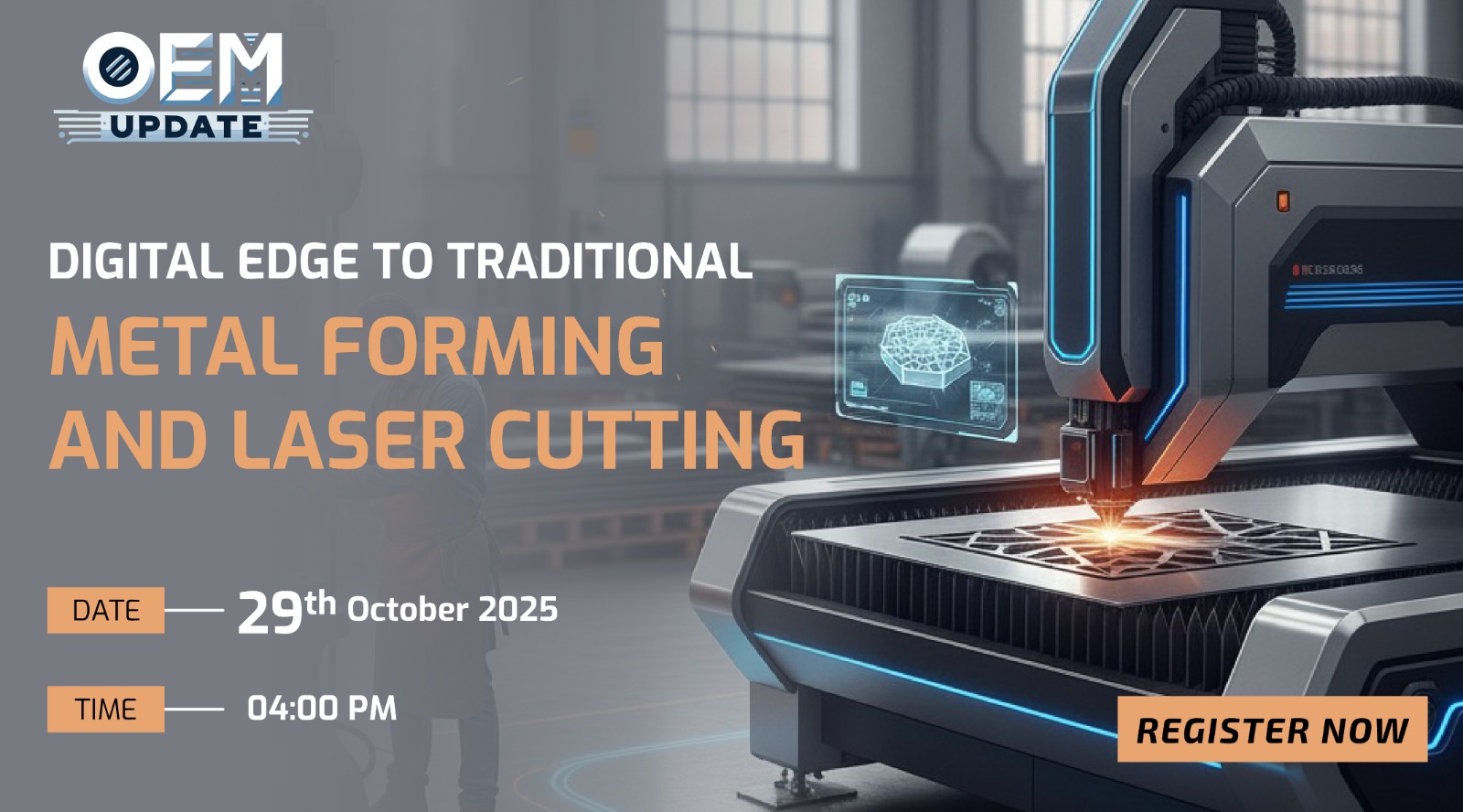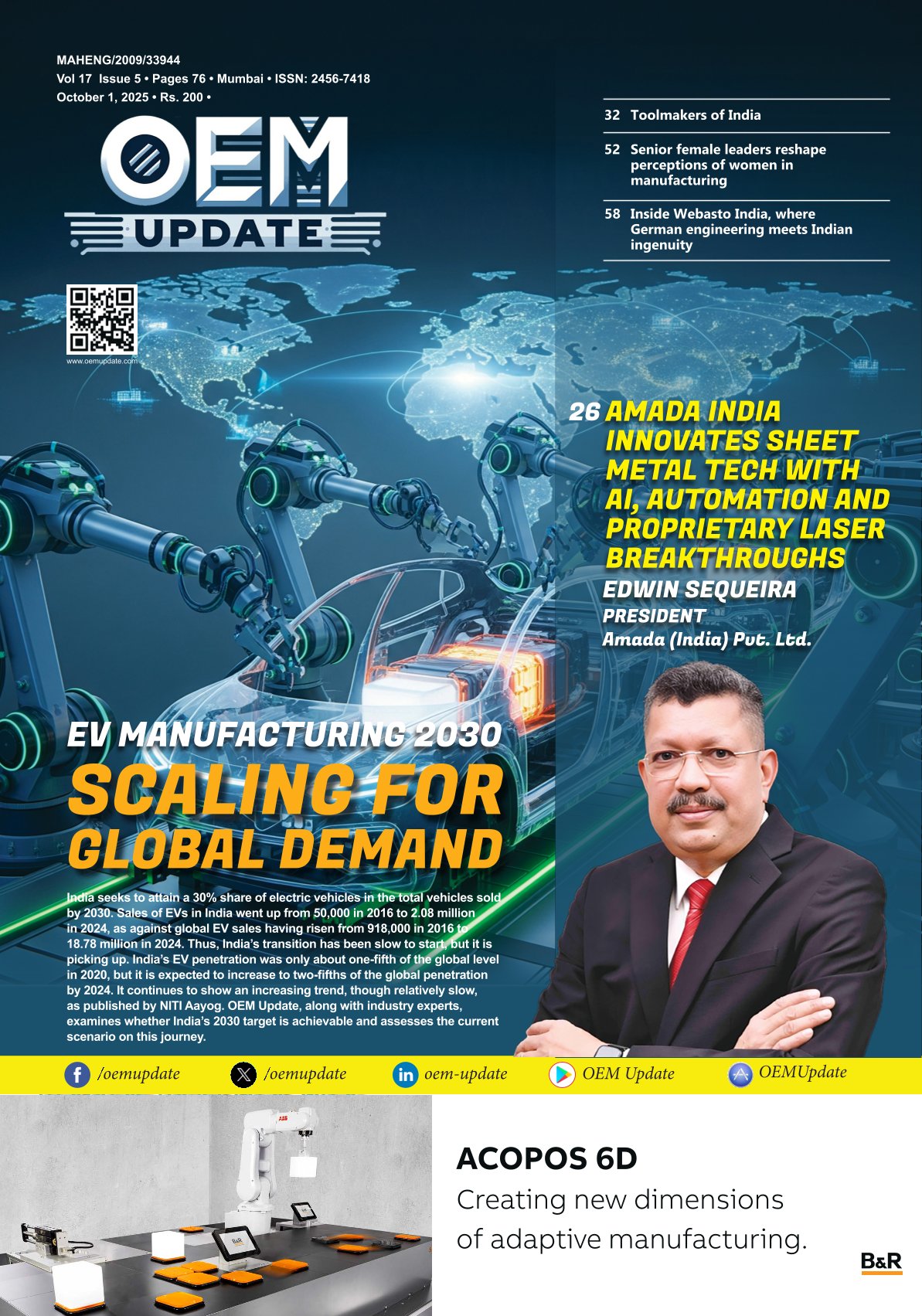Plasma cutting does not have to be loud
By OEM Update Editorial April 13, 2019 12:25 pm IST
Today, plasma cutting is one of the most important thermal cutting processes in the metal-working industry. It has also developed a high economic efficiency in recent years. However, the sound level emitted during the cutting process has presented a particular challenge – until now. Kjellberg Finsterwalde’s team of developers has succeeded in developing the Silent Cut technology, thereby being able to reduce the sound level significantly. It has the potential to redefine the entire sector as well as safety at work in mechanical engineering.
Being a process for weld preparation, thermal cutting is often the first step of the production chain. Therefore, the achievable cut quality and the costs per cutting metre are essential for the production process. The quality of the cut-to-size parts has a fundamental influence on the subsequent machining processes, i.e. welding or soldering. The capacity and efficiency of the individual cutting and joining processes are also decisive factors for the quality of the finished products and the effectivity of the entire production process. In addition to the achievable cut quality, the cutting speed also influences the costs per cutting metre in direct proportion.
That’s why in the past Kjellberg Finsterwalde’s development activities concerning plasma cutting focused mainly on optimizing these two factors. Due to the developments and optimizations the quality of cut edges and structural elements, in particular holes and inner contours, as well as the productivity could be increased by up to 45 per cent. Today, developments like the Contour Cut and Contour Cut Speed technologies for Kjellberg plasma cutting machines of the HiFocus and Smart Focus series determine the performance of the technology as far as mild steel sheets with a thickness between 3 mm and 50 mm are concerned.
The high performance is made possible by the maximum constriction of the plasma arc in connection with extremely high energy density, flow velocity and rotation. However, these very factors are the reason why the noise emission has gradually increased over the past years. Users may perceive the noise emission as disturbing and without ear protection it has to be classified as harmful to human health. This is particularly true of the noise in the upper frequency range which is perceived as typical whistling sound. During plasma cutting, the noise emissions can amount to significantly more than 100 dB(A) resulting in a high noise exposure in the direct as well as the extended working area of the plasma cutting machine. Noise emissions in this amount clearly exceed the admissible trigger threshold of 85 dB(A), thus requiring ear protection measures pursuant to the occupational health and safety regulations.
Thus, one premise of the development work at Kjellberg Finsterwalde was to reduce the noise and at the same time to preserve the high cut quality and cutting speed, if possible.
Sound emissions during plasma cutting with contour cut
In experimental studies, the direct and indirect working area of a plasma cutting machine was investigated during plasma cutting of mild steel with a material thickness between 5 and 20 mm, using the cutting technology Contour Cut. The sound pressure level measured in the direct working area during the cutting process at 130 A amounted to 107 dB(A). In the indirect working area, lower sound pressure levels between 93 und 98 dB(A) were measured depending on the location of the measurement. The latter sound pressure levels depended on the distance from the cutting process and on the sound propagation conditions.
In order to reduce the sound, different primary and secondary measures can be taken. Secondary measures are, among others, to use an enclosure for the plasma machine or the plasma torch or to cut under a water cover. In contrast, primary measures are focused on reducing the direct sound emission from the plasma torch. From the user’s perspective this requires the minimum effort, namely no effort at all. Therefore, the development activities focus on the consumables of the plasma torch and the process parameters. In particular, the nozzle was optimized in terms of fluid dynamics. As a result, we were able to reduce the sound level during cutting of 12 mm mild steel at 130 A by 10 dB(A).
Due to the logarithmic relationship between the sound pressure and the sound pressure level, the reduction of the sound pressure level by 10 dB(A) is perceived as a halving of the loudness. Because we have additionally succeeded in reducing the whistling sound typical for the highly-constricted plasma cutting process, the perceived sound reduction seems, in part, even higher.
During the cutting process the sound emissions may vary depending on the process status, i.e. during piercing, cutting of corners or moving over kerfs.
Cutting of Mild Steel with Reduced Sound Pressure Level – Silent Cut Kjellberg Finsterwalde now offers the new plasma cutting technology Silent Cut as solution for reducing the sound exposure during plasma cutting. When cutting mild steel with a material thickness between 4 and 30 mm and currents ranging between 60 and 160 A, the sound pressure level can be reduced by up to 10 dB(A)*.The new sound-reduced technology Silent Cut includes modifications not only of the nozzle design but also of the cutting parameters. Both factors, in addition to the sound emission, influence the cut result significantly. The objective of developing this technology was to achieve a sound reduction and at the same time a cutting speed, cut quality and lifetime that are comparable to those of the current technologies.
We achieved a high quality, i.e. a low rectangularity and inclination tolerance, low dross formation, smooth surfaces and a small heat-affected zone and a reduction of the sound pressure level (picture 3).
Small differences can occur as far as contour elements are concerned. Also the cutting speeds and thus the costs per cutting metre are comparable.
The reduction amounts to max. 10 dB(A) depending on the amperage and the material thickness. The reduction of the sound pressure in Pascal by more than 60 % is even more impressive. Depending on the frequency, such reduction is perceived as a significantly higher sound reduction.
The cut quality and cutting speed of the new sound-reduced Silent Cut technology are comparable to the current technologies with highly constricted plasma arc. Therefore, –Silent Cut makes an important contribution to safety at work – with consistently high cut quality. As a further development of the proven and patented Contour Cut technology with new consumables and new cutting data, users can cut holes, bars and contours with a continued high quality thereby benefiting from a considerably reduced sound pressure level.
Due to the easy change of the consumables and the use of the Silent Cut database the technology can also be used for existing plasma systems.
Silent Cut is an independent technology and a supplement to Contour Cut and Contour Cut Speed. The user has the choice. Using the Silent Cut technology promotes the employees’ satisfaction and enables the user to revalue the work environment in the risk assessment.
For more details, Visit
www.kjellberg.de
Cookie Consent
We use cookies to personalize your experience. By continuing to visit this website you agree to our Terms & Conditions, Privacy Policy and Cookie Policy.
















